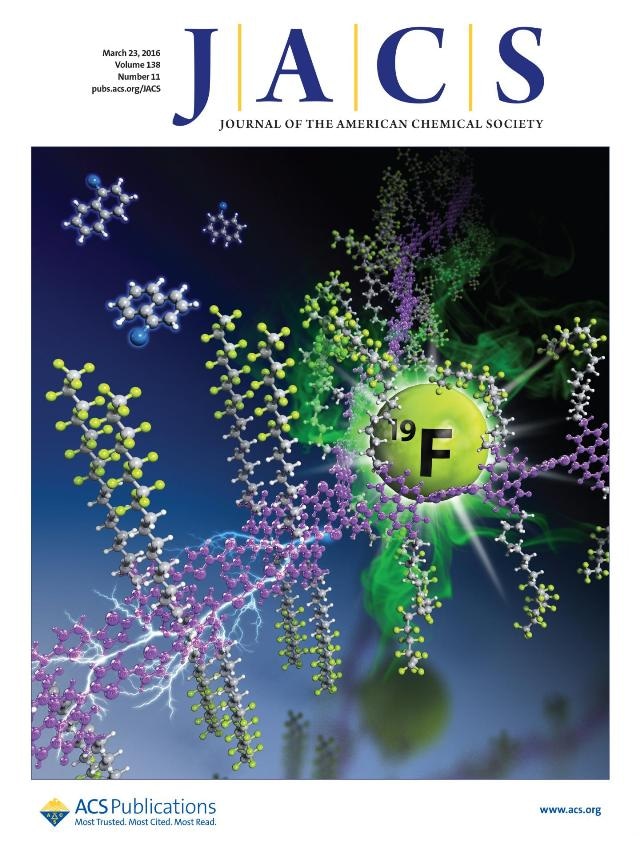Apr 22 2016
Polymer semiconductors have the potential to be used as a key part in plastic electronics of the future. These semiconductors can be processed economically on large-area and mechanically flexible substrates.
 Kilwon Cho and the team's research was published in Journal of the American Chemical Society as a cover article and highlighted by the editors in JACS Spotlights. (Photo Credit: Journal of American Chemical Society)
Kilwon Cho and the team's research was published in Journal of the American Chemical Society as a cover article and highlighted by the editors in JACS Spotlights. (Photo Credit: Journal of American Chemical Society)
Currently these semiconductors, especially n-type semiconducting polymers, fall behind inorganic equivalents in charge carrier mobility, which distinguishes how rapidly charge carriers can travel inside a semiconductor, and the chemical stability in surrounding air.
A collaborative research team, consisting of Prof. Kilwon Cho and Dr. Boseok Kang with Pohang University of Science and Technology, and Prof. Yun-Hi Kim and Dr. Ran Kim with Gyungsang National University, have created a unique n-type semiconducting polymer possessing excellent charge carrier mobility and oxidative stability. The research findings have been published in the American Chemical Society (JACS) Journal as a cover article, and highlighted by the editors in JACS Spotlights.
The team altered a n-type conjugated polymer with semi-fluoroalkyl side chains, which possesses numerous novel properties, such as hydrophobicity, thermal stability, rigidity, chemical resistance and oxidative resistance. They also have the capacity to self-organize.
The altered polymer formed a superstructure made up of side-chain crystals and polymer backbone crystals, resulting in a superior semicrystalline order. The team linked this occurrence to the sturdy self-organization of the side chains and increased charge transport in polymer semiconductors.
We investigated the effects of semi-fluoroalkyl side chains of conjugated polymers at the molecular level and suggested a new strategy to design highly-performing polymeric materials for next-generation plastic electronics.
Professor Kilwon Cho, Pohang University of Science and Technology
This study was supported by the Center for Advanced Soft Electronics under the Global Frontier Research Program and the National Research Foundation (NRF) of Korea funded by the Ministry of Science, ICT and Future Planning.
Source: http://www.postech.ac.kr/